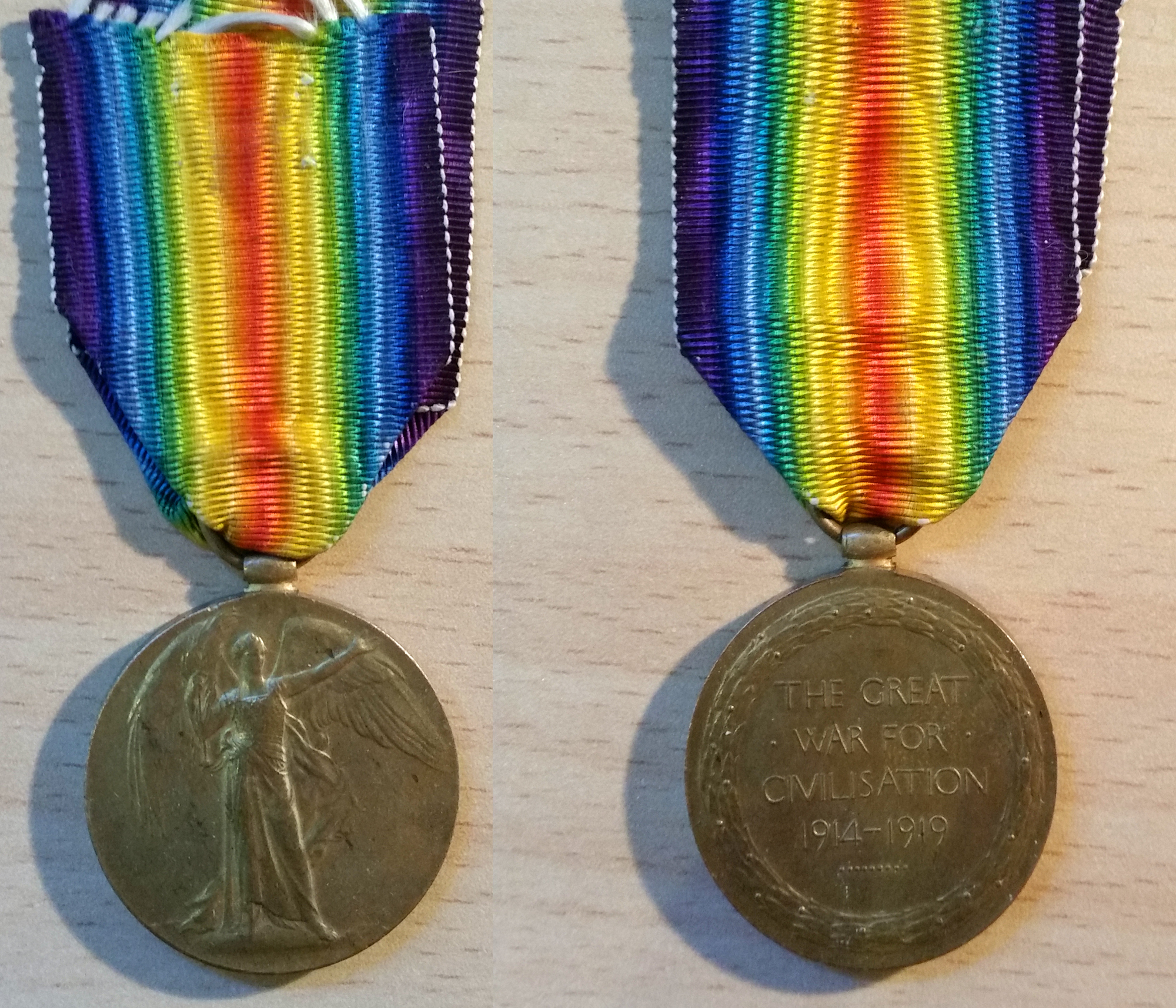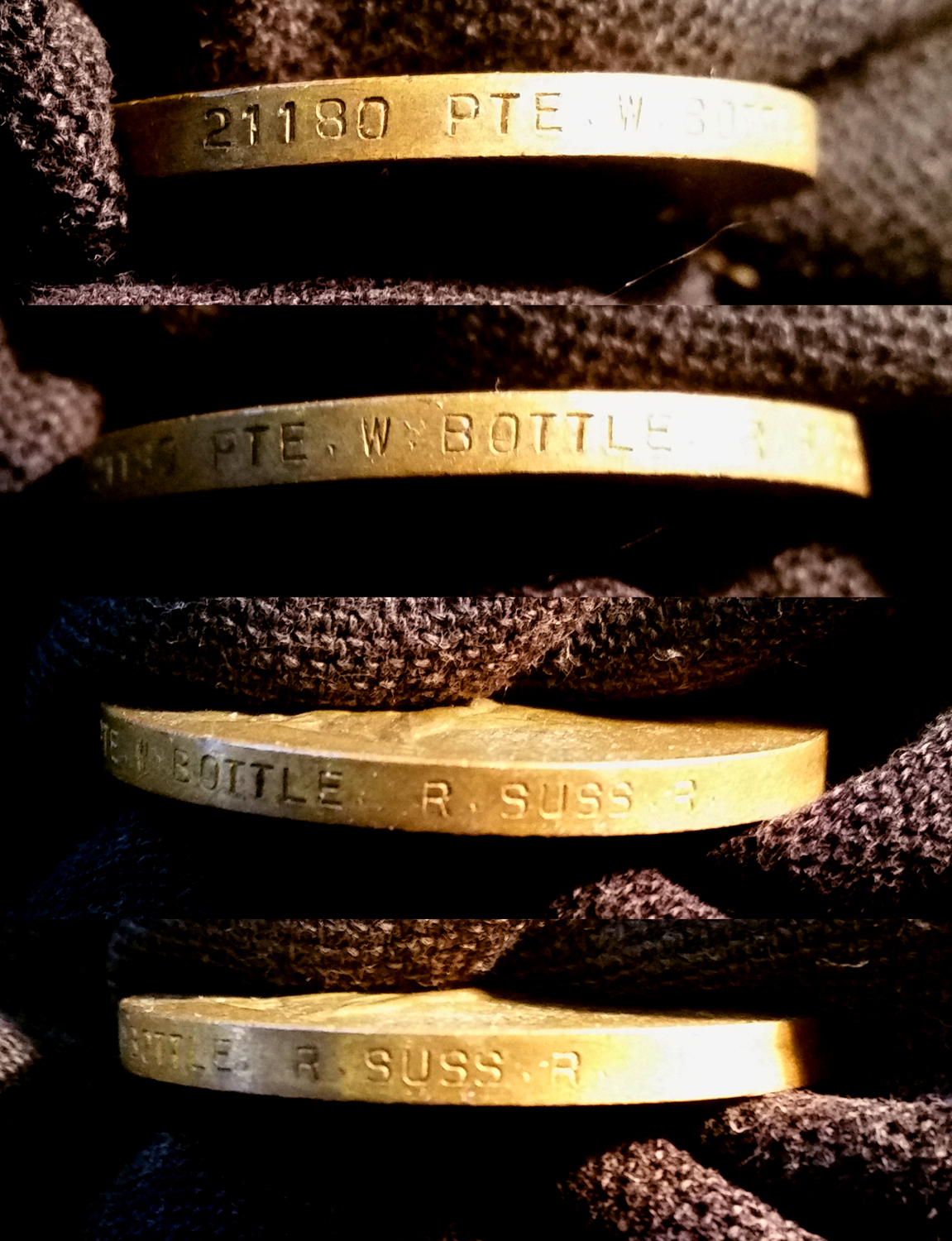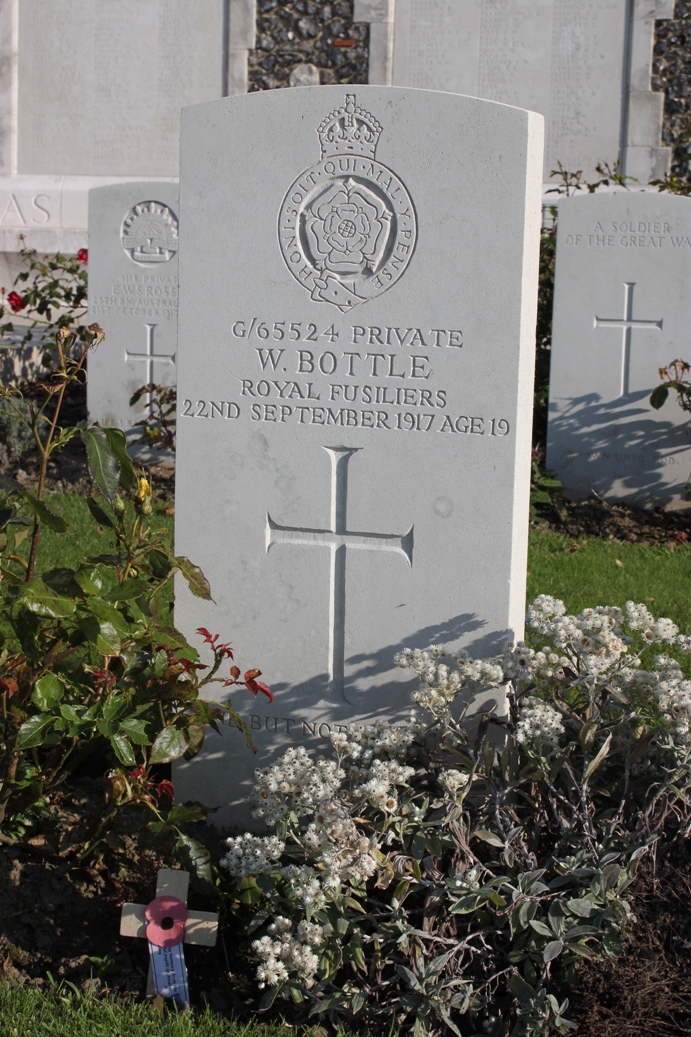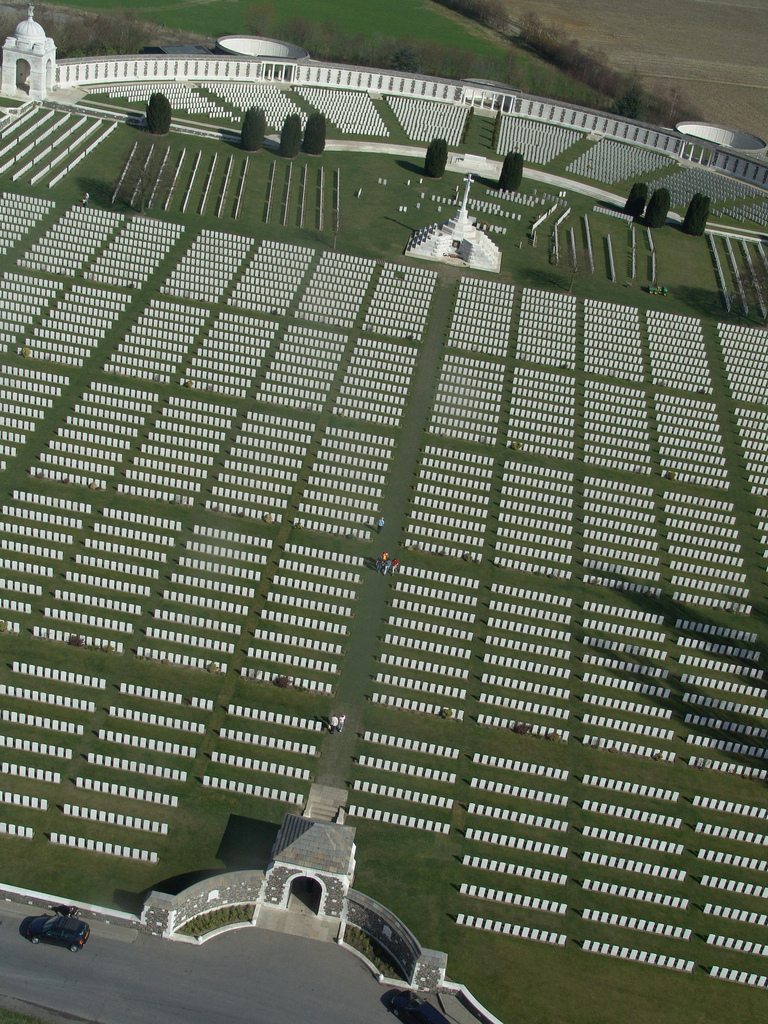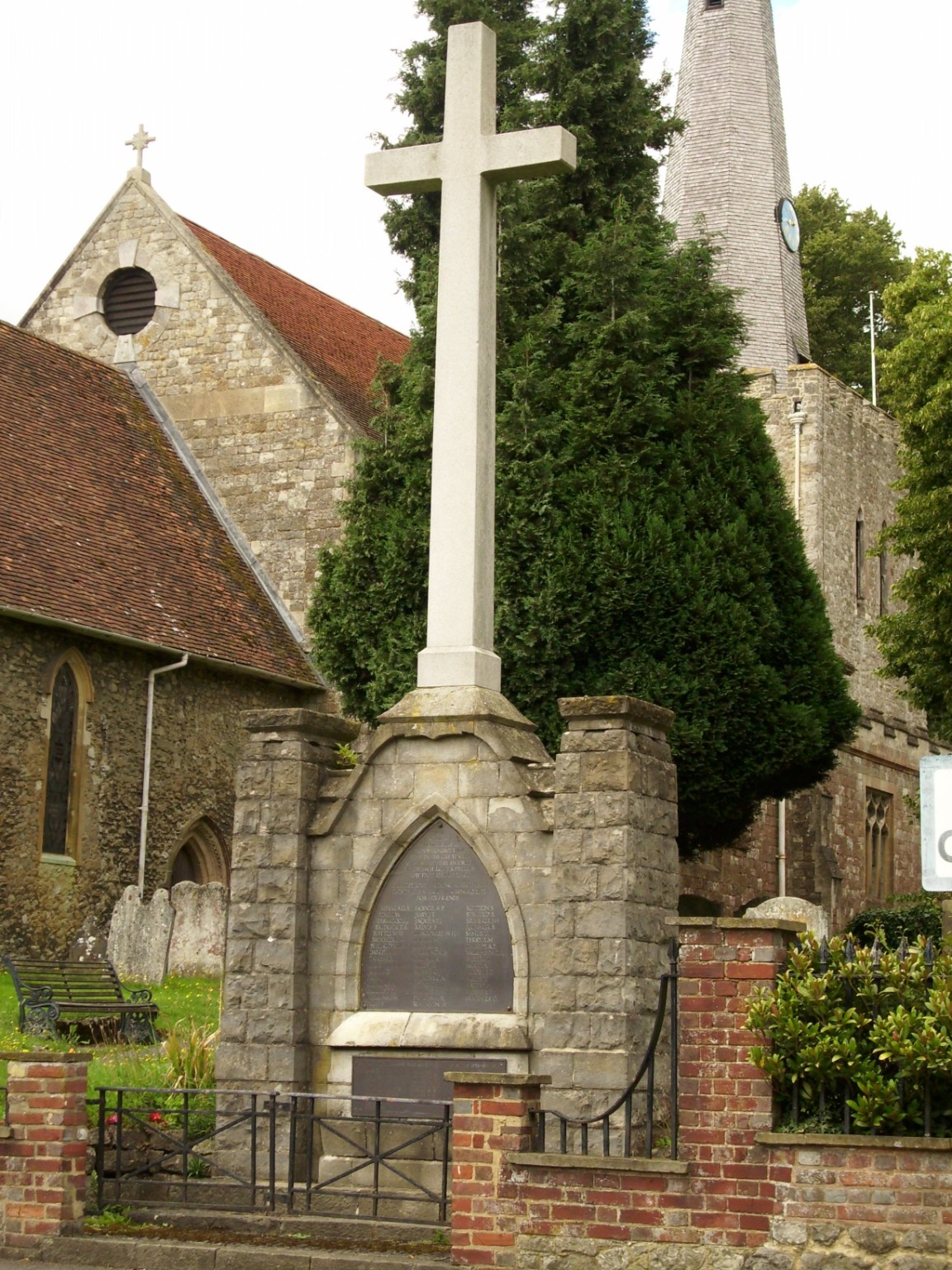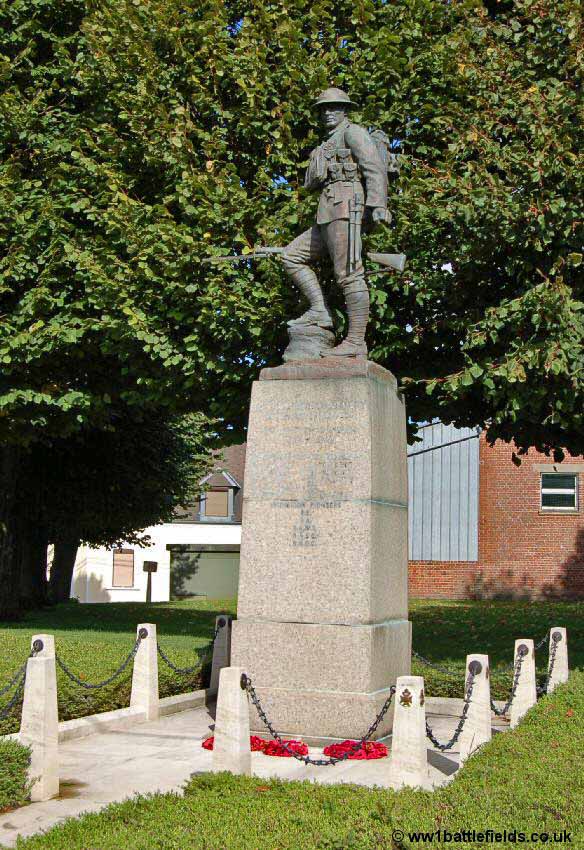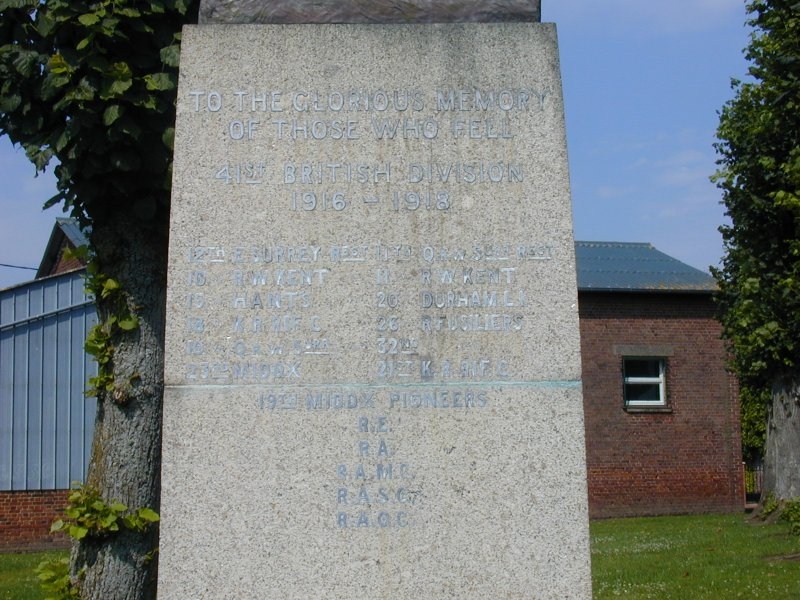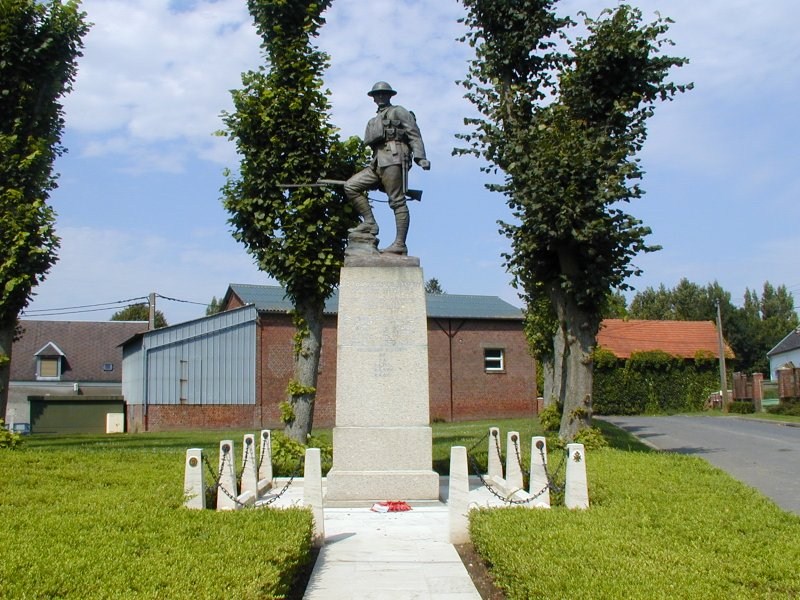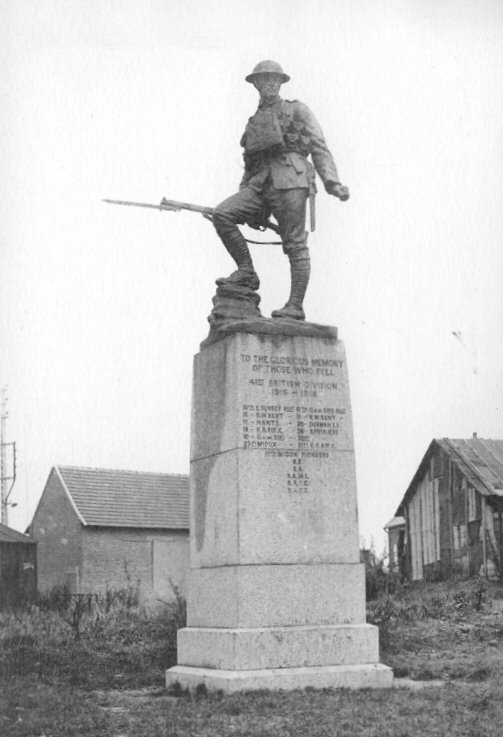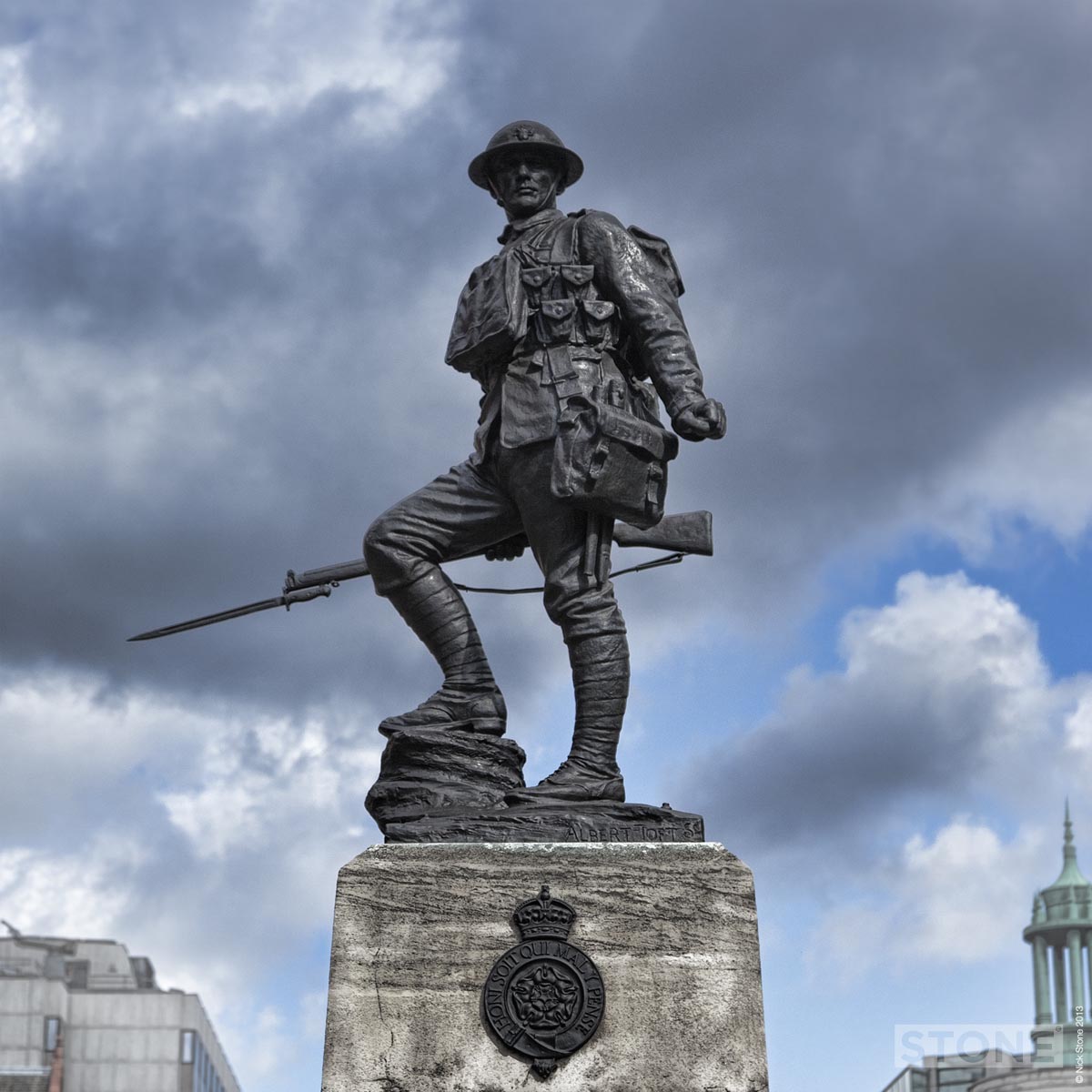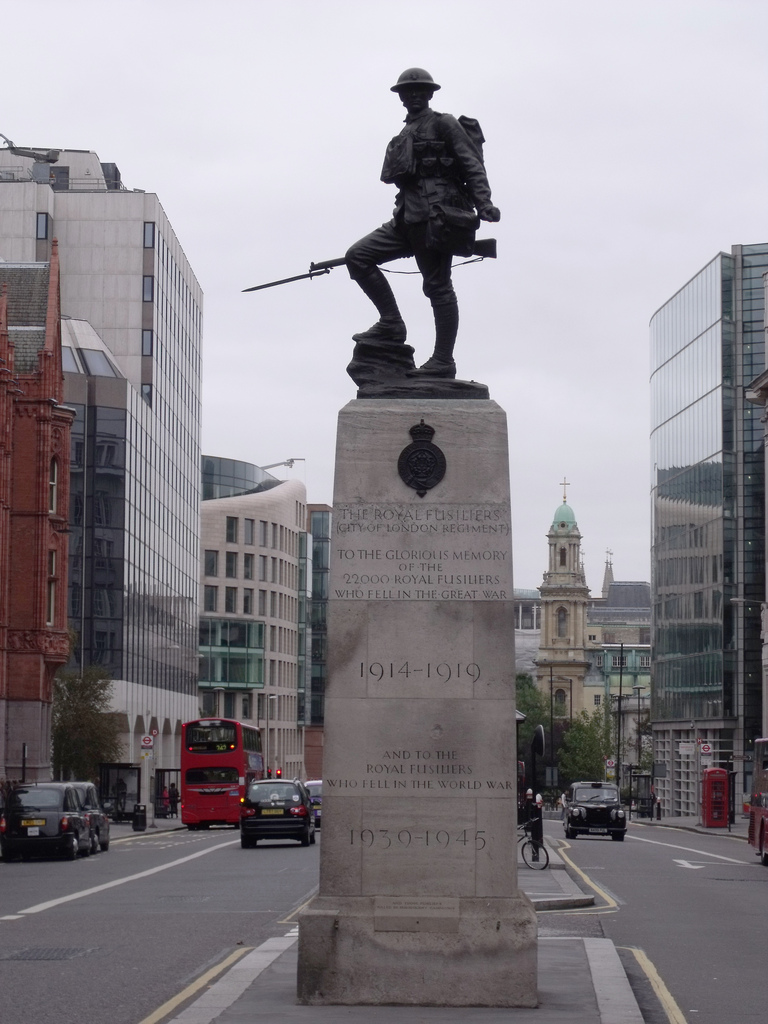Wallace Bottle
(Click any thumbnail image to view full size)
Family
On the census of 1901, 3 year old Wallace is shown to be living at 43 Stone Cottages, Ulcombe, on the outskirts of Maidstone, Kent with his Mother Emily - known by her middle name of Eliza - (33) and his father, William (28), who is employed as a stockman on a local farm. His parents were married 5 years previously.
By 1911 The family had moved to Green Farm, West Kingsdown, Kent. William is now working as a shepherd there, and the family has grown to include a little sister for Wallace (now 13), in the form of Mabel aged 9. Both the children attend school locally.
The family later move once again to "Glenburn", Town Hill, West Malling, Kent.
1901 Census
1911 Census
Father on 1891 Census
Father on 1881 Census
Wallace BOTTLE (Private)
G/65524, 32nd (Service) Battalion, Royal Fusiliers (City of London Regiment) (East Ham) -
Previously - 21180, Royal Sussex Regiment.
Victory Medal
Wallace Bottle enlisted in the army in Maidstone some time after January 1916, possibly in September on his 18th birthday. He was posted to the strength of the Royal Sussex Regiment, although he was later re-assigned to the 32nd Bn Royal Fusiliers, under the 124th Brigade, 41st Division. It is not known when he arrived in France, but he would possibly have seen action at the Battles of Messines and Pilkem Ridge as part of the Third Battle of Ypres - known as Passchendaele.
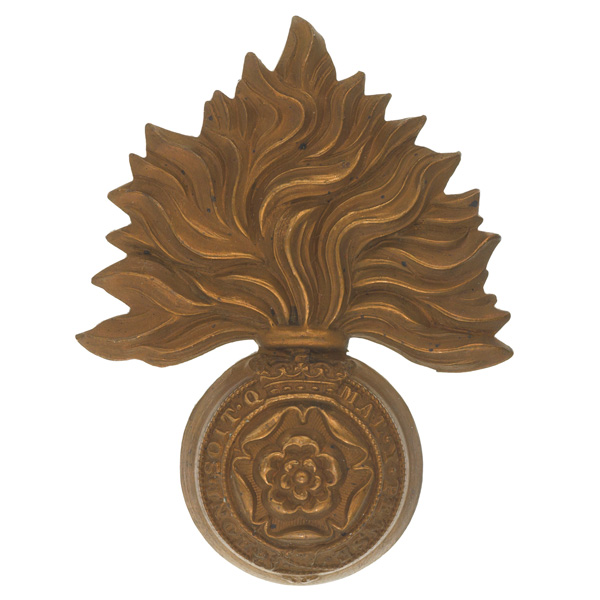
What can be established for sure is that Wallace was involved in the attack which later became known as the Battle of Menin Road in September 1917.
Over three days, the battalion marched from Tatinghem to the Murrumbidgee Camp, La Clytte, they then moved via Ridge Wood to take up positions in the Mount Sorrel area, digging in 500 yards West of Canada Street Tunnels (Brigade Headquarters). Wallace and his comrades came under an enemy artillery barrage on the evening of the 18th September, which caused 20 casualties. The following evening, the battalion moved to the assembly area in Shrewsbury Forest, they prepared to attack at zero hour, which was set for 5.40am. It would have been a nervous hour-long wait.
The advance began, and the 32nd Fusiliers followed closely behind the 10th Queens Regt, advancing unobsrtucted for the first 200 yards, the enemy artillery thankfully dropping behind them. Suddenly they came under heavy machine gun fire, causing casualties among both battalions. The 10th Queens casualties were so heavy, the report on the battle states they "ceased to be a fighting unit". The 32nd Fusiliers moved accross and out of their designated sector, to re-join the advance on their left flank. by 9am they captured their first objectives, designated the "blue line", under heavy and accurate sniper fire, as well as sustained enemy machine gun cover. Wallace's battalion had by this point sustained 50% casualties, and was unable to do much more than attempt to hold the ground they had already captured. The battalion remained pinned down throughout the day, with the accurate sniper fire and machine guns from the low ground ahead making even movement by individuals impossible.
By 6pm the enemey was massing in preparation for a counter-attack, but that was soon snuffed out with a prompt British artillery barrage. Reinforcements arrived the following morning, and despite further attempts to capture the forward objectives by other battalions, the initial "blue line" was all that could be effectively held.
Wallace's battalion captured and held their "blue line" from the morning of the 18th September, until the evening of the 23rd September; under constant very effective enemy sniper fire and machine guns from the opposing bank, and open ground ahead of them. At some point on the 22nd September 1917, whilst holding the frontline, Wallace Bottle was killed, probably by a sniper's bullet. He was just 19 years of age. He was one of 52 men of his battalion who died during the 3 day action. A further 255 men were wounded or remained "missing" and unexplained. More than 60% of the entire battalion had fallen over those hellish 3 days. He was hastily buried by his comrades nearby.
There he remained, until in April 1921, when the Imperial (later Commonwealth) War Graves Commision records that his unmarked grave was discovered and exhumed. He was able to be identified by the two identity discs which had been left on his body.
Wallace was reburied in February 1922 in the massive Tyne Cot Cemetery, near Ypres, where he is remembered, with honour, along with 11,956 other soldiers of the Great War. His original headstone schedule documents show that his parents had returned the necessary paperwork and requested the inscription "GONE BUT NOT FORGOTTEN" to be added to his memorial.
See also Arthur Stonehouse Thompson, a soldier in the 39th Division who was also killed the day after Wallace in the same action, and is remembered nearby on the Tyne Cot Memorial to the missing, which surrounds the cemetery, listing a further 34,959 other UK and New Zealand men who have no known grave in the Ypres Salient.
See also George Bance, another soldier of the 41st Division.
Wallace is additionally remembered on the West Malling Civic War Memorial, West Malling, Kent.
A memorial to the achievements and memory of the men killed of the 41st Division stands in Flers today. The 32nd Royal Fusiliers are named on the memorial, along with the other units and formations which made up the division. See below for photos of the memorial (click to enlarge).
The more than 22,000 men of the Royal Fusiliers to have lost their lives in the First World War are also commemorated on the Royal Fusiliers Memorial and Garden of Rememberance in Holburn, London (click any image to enlarge).
Wallace was also entitled to a British War Medal, which may have been scrapped for it's silver content at some point, or simply seperated from the Victory Medal. I am looking to acquire the missing medal, should it, by any chance ever resurface.
Wallace Bottle - Medal Index Card
Wallace Bottle - Grave Concentration
Wallace Bottle - Grave Registration
Wallace Bottle - Headstone Schedule
Wallace Bottle - Headstone Schedule 2
Wallace Bottle - Memorial Certificate
Wallace Bottle - On Cemetery Register
Full List of West Malling War Memorial From "Kent Fallen" (PDF)
War Diary of the 32nd Bn Royal Fusiliers
- May 1916 - Oct 1917 (Large PDF)
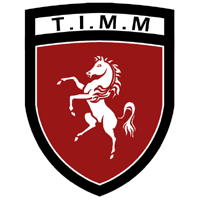 The Invicta Medal Museum (Online)
The Invicta Medal Museum (Online) 